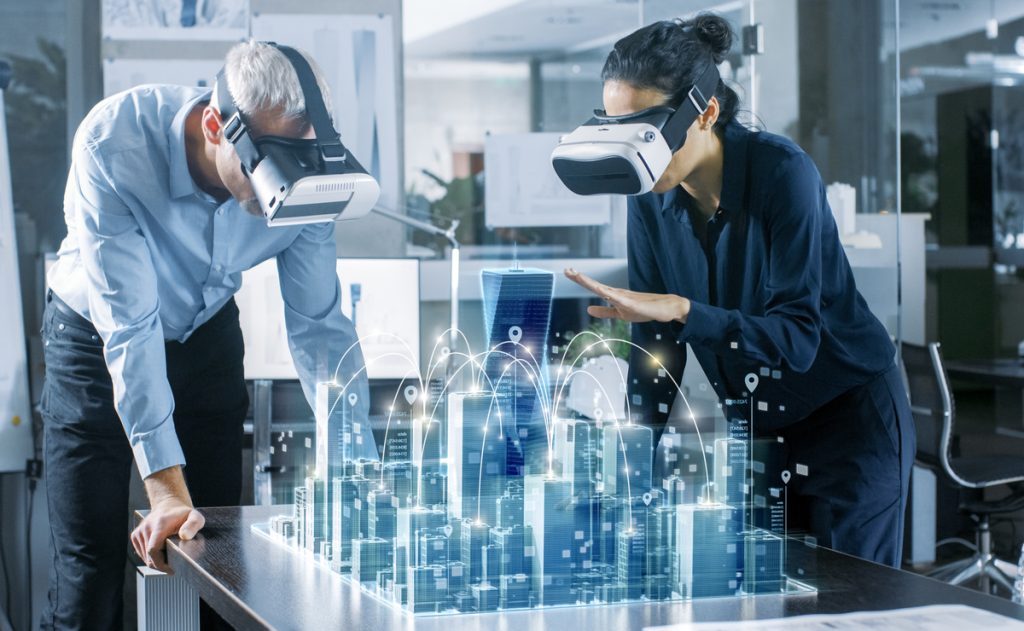Industries and businesses have predicted the Augmented Reality (AR) market will exhibit a major growth perspective. Also, there will be a transformation in the way many companies run their businesses. It works well because consumers often engage with the power offered by AR. There are some early adopters of the technology who are leading the way, while some companies have not even introduced the performance that AR promises.
Provided that every company wants to align with their customers’ demands to grow, some companies still lag. Every company that has a scope of implementing this technology is not fully embracing this potential of AR, the reason being several obstacles that exist in line with AR adoption.
The barriers are broken down into several points, as listed below.
Demand
Mostly, people these days can access and enjoy technology via mobile or computers. However, if it is about headsets, they are expensive. A high-end headset can cost up to USD 4,000. And thus, the development of such technology is also expensive. The introduction and development of AR applications such as Pokémon GO require high-product demand. Only if the demand increases, the businesses will come forward to invest in such technologies.
Business value
Even if the technology seems to be attractive to several consumers, AR should capture the business aspect too. It means the key to the adoption and success of Augmented Reality is the ability to focus on the business value. This technology needs to position their offerings in ways that appear good and positive to the business owners and decision-makers. It is the perspective that will reduce the uncertainty of technology adoption faced by executives.
Christine Perey, Industry Analyst, Researcher, and an Advocate for Interoperable Augmented Reality comments:
“Many AR projects encounter financial barriers: either funding is insufficient and/or the resources are not distributed across all the components of a successful AR adoption campaign. There is also a general shortage of information about the costs and components of return on investment (ROI). Finally, AR product and service providers are searching for new and different business models (Data as a Service, Software as a Service, Hardware as a Service) which can be unfamiliar to customers and need to be tested before proven.”
Security
Since AR relies on the delivery of enterprise IP (Intellectual Property) to devices and systems outside the corporate firewall, there should be sufficient measures in place that will help to protect the IP. To address the security issues, the AREA’s (Augmented Reality for Enterprise Alliance) Security Committee is finding the security gaps with AR and proposing best practices for adoption by vendors and technology users.
Human factors
One very common obstacle or barrier to AR adoption is capturing the written and visual information about the users. The AR functionality involves and implements user-related information, but these tasks are difficult to perform. Another concern is that AR-related devices typically use camera-related technology such as device camera(s), which help capture sounds and user location openly. However, industrial best practices offer a way to mitigate concerns by ensuring that users know what is captured and how the information is used.
Content
For consumers, the lack of content is a huge problem. For the launch of AR-enabled applications, it is essential to have a massive amount of content. Furniture apps of brands such as Ikea are brilliant, but it is not enough for a consumer to invest. Pokémon Go was a success because of its ease of use and existing content. The forthcoming Harry Potter Wizards Unite AR game—in which players find objects, fight with each other, and unite to stand against the monsters—will have a chance to win.
“Microsoft’s HoloLens is working with developer Black Marble on truServe, a scene of crime investigation app,” says Solomon Rogers, Founder and Chief Executive of Immersive Content Specialist Rewind. “It allows you to overlay clues, keep track of what you know and place virtual markers, or gather multimedia evidence without disturbing the physical scene and potentially tainting evidence. It’s a little like a crime scene investigation game, so as developers see what Harry Potter can do, they will take inspiration for business uses.”
Optimization
The software and devices used across industries need to be optimized for 3D experiences. The recent XR Industry Survey 2018 iterated that the potential adopters aren’t sure of the approximate return on investment and face the challenge of integrating the technology with the processes and systems.
“In most cases, the benefit of XR is measured on user experience, which is difficult to quantify and compare against costly software and device investment,” Thanos Malevitis, Accenture Strategy’s Managing Director for Technology, Communications and Media, explains. “Unlike cloud-based solutions or analytics and machine-learning, the business case is less tangible.”
To overcome such issues, Amazon’s Sumerian, Google Blocks, and Adobe Aero offer building-block technologies and tools to create extended reality experiences through drag-and-drop assets.
So, these were the major obstacles standing in the way of Augmented Reality adoption’s growth line. Also, every technology, when new in the market, should become first become a part of the workplace and then move toward household use. Considering computers as an example, they first came to the workplace far before consumers calculated this technology’s value in their homes. With the slow eradication of obstacles and the rising demand of consumers, AR will soon enter our workplaces and homes.
You should know this
Citing data from Statista, the Coresight report indicated that the retail sector could increase Augmented reality (AR) and Virtual Reality (VR) spending. For 2020, the predictions are that consumer spending on reality technologies could reach USD 7 million, and distribution and services spending on technologies could make it up to USD 4.4 million.
Additionally, during the COVID-19 pandemic, these technologies will help shoppers engage with products before purchasing.
In a nutshell, the pandemic kept consumers cooped up at home, seeing which brands and retailers, including L’Oréal, Kendra Scott, and Suitsupply, introduced virtual tours of their products and description to engage with them. The first half of 2020 has been low due to the coronavirus pandemic. However, retailers are still expected to spend USD 1.5 million on the development of AR and VR technologies today and shortly.
For much such futuristic technology content, download our latest whitepapers on augmented and virtual reality.









